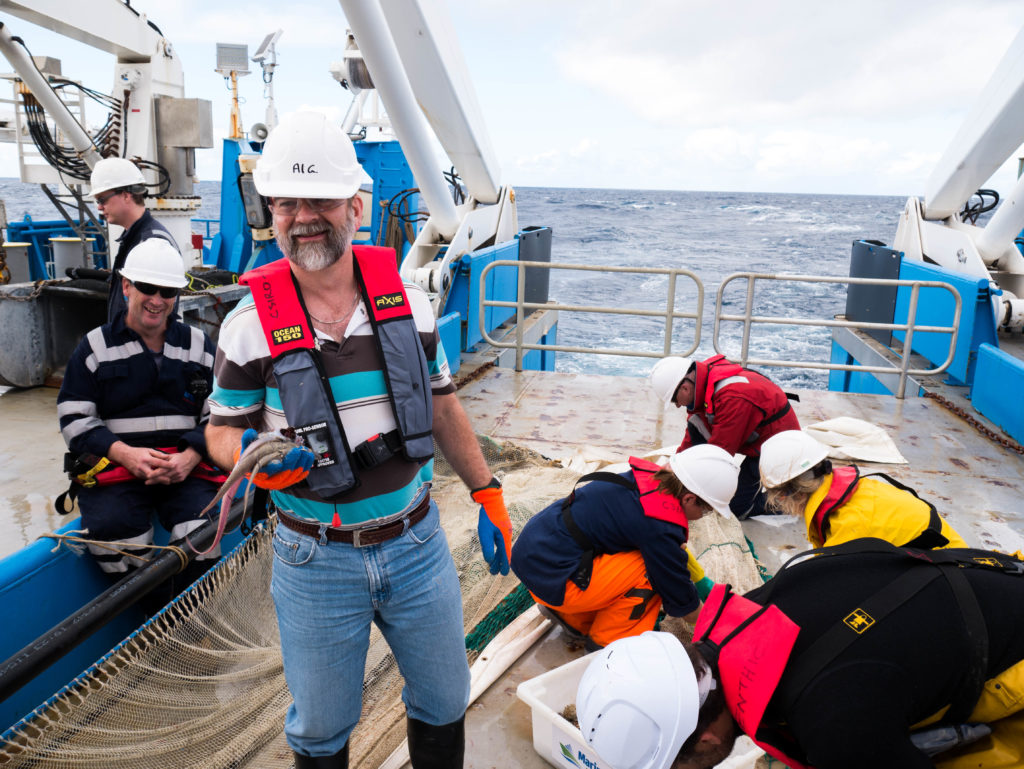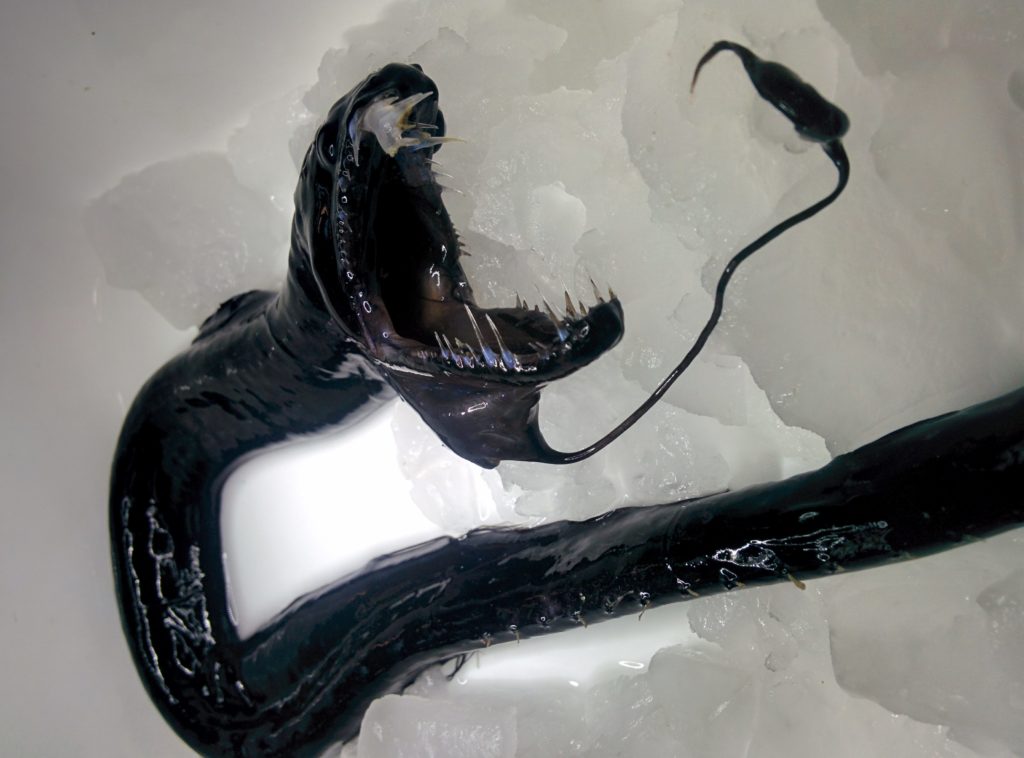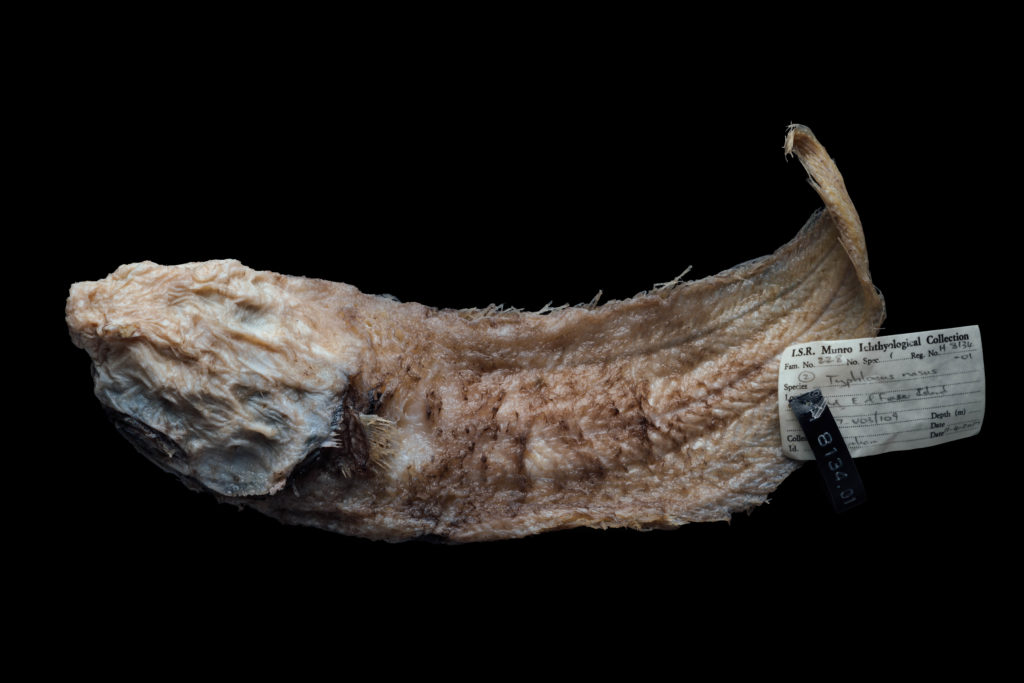
During Investigator’s Sampling the Abyss voyage, Al Graham had his hands full with rare and unusual fishes from the deep. Photo Asher Flatt/Marine National Facility.
During Investigator’s Sampling the Abyss voyage, Al Graham had his hands full with rare and unusual fishes from the deep. Image: Asher Flatt/Marine National Facility.
The depths of the ocean are one of Earth’s most inaccessible and unexplored environments, and getting a sneak peek into what lives down there can provide great insight into managing marine diversity. Our scientists have been hard at work at sea on the RV Investigator and in our Hobart lab, teaming up with the Museums Victoria crew to examine fishes collected during the Sampling the Abyss voyage. Their research has been circulating the news, thanks to one quirky guy: the Faceless Fish.
So what exactly is it like to bring up a trawl that may shed light (for the first time ever) on some of the weirdest Alien-like creatures known to humankind? We spoke to Alastair Graham, Fish Collection Manager, to get the answers to some of our burning questions.

The dragon fish. The stuff of nightmares, or, the abyss.
The dragon fish. The stuff of nightmares, or, the abyss.
Firstly, it’s quite a long wait. After mapping the sea floor for a good spot to put the net down, it then takes a measly three hours or more for the net to get down to the ocean floor (4000 metres to 5000 metres below). And once the trawl is brought back up? It’s a mixture of excitement and curiosity, tinged with fear. That’s for two reasons: fear that the net could be damaged due to the rough seabed, and the fear of the unknown.

The Faceless Fish, a deep-sea fish with no visible eyes, was rediscovered in 2017 during an Investigator voyage.
The latter applies when you catch a species without a face. According to Alastair, ‘Nearly every time we put a net down to those depths, it comes back up with some species we’re seeing for the first time – at least in Australian waters. It’s very exciting.’
Because the animals live at such great depths, the move towards the surface can cause many fishes to look quite different to what they would at their home in the depths. (Except for the terrifying dragon fish which would look scary wherever it is). We asked Alastair what he might be thinking in those moments waiting for the trawl to be brought up to the surface.
‘Of course, these animals aren’t putting good looks at the top of the list by any means,’ says Alastair. ‘They probably wouldn’t win any beauty pageants’.
The abyss is a dark place, with no sunlight – so the need for survival is their ultimate priority – not looking attractive to a mate. ‘[Attractiveness] isn’t as important down there’, he muses. ‘Especially when some fishes don’t even have a face!’
The faceless fish is a bizarre species because it does have eyes, however the flesh of the head covers them. ‘Many abyssal fish often have larger eyes to be able to see in their very light-limited environment.’ According to Alastair, there’s still a lot of information to discover about the faceless fish and everything else lurking in the deep abyss.

Art meets science. Photographing the specimens we find on our voyages is important to capture the colour, size and form of fishes before they are preserved and stored. Image: Asher Flatt & Marine National Facility
Art meets science. Photographing the specimens we find on our voyages is important to capture the colour, size and form of fishes before they are preserved and stored. Image: Asher Flatt/Marine National Facility.


13th October 2018 at 11:43 pm
All though it may be all exciting and such but I do feel sorry for the fish being dragged up from that depth to the surface, must be terrible for them.
8th March 2018 at 8:49 pm
This is such an interesting and exciting journey. I agree wondering what might be trawled would be exhilarating but also nervewracking! It is wonderful to read about the new marine life perhaps not all of us would be up for the actual thrill of the unexpected! A wonderful research venture all the best exploring the abyss!